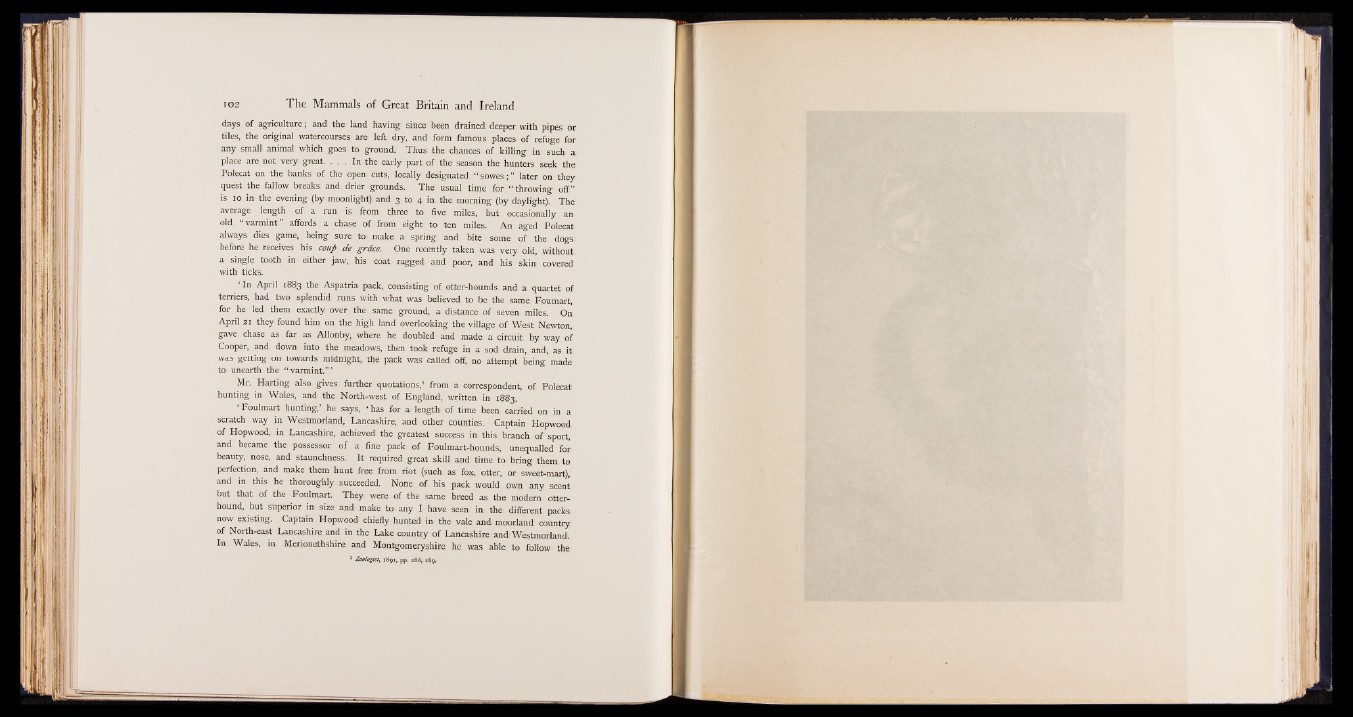
days of agriculture; and the land having since been drained deeper with pipes or
tiles, the original watercourse^ are left dry, and form famous places of refuge for
any small animal which goes to ground. Thus the chances of killing in such a
place are not very great. . . . In the early part of the season the hunters seek the
Polecat on the banks of the open; cuts, locally designated, “ sowes;” later on they
quest the fallow breaks and drier grounds. The usual time for “ throwing off"
is io in the evening (by moonlight) and 3 to 4 in the morning (by daylight). The
average length o f a run is. from three to five miles, but occasionally an
old “ varmint'.’*: affords a chase of from eight to. ten miles.. An aged Polecat
always dies game, being sure to make a spring and bite some of the dogs
before he receives his coup de grdce. One recently taken was very old, without,
a single tooth in either jaw, his coat ragged and poor, and his skin covered
with ticks.
‘ In April 1883 the Aspatria pack, consisting of otter-hounds and a quartet of
terriers, had two splendid: runs with what was believed to be the same Foumart,
for he led them exactly over the same ground, a distance of seven miles. On
April 21 they found him on the high land overlooking the village of West Newton,
gave chase as far as Allonby, where he doubled and made a circuit by way of
Cooper, and down into the meadows, then took refuge in a sod drain, and, as it
was getting on towards midnight, the pack was called off, no attempt being’ made
to1 unearth the “ varmint.” ’
Mr. Harting also gives further quotations,1 from a correspondent, of Polecat
hunting in Wales, and the North-west of England, written in 1.883.
‘ Foulmart hunting,’ he says, ‘ has for a, length of time been carried on- in a
scratch way in Westmorland, Lancashire, and other counties. Captain Hopwood,
of Hopwood, in Lancashire, achieved the greatest, success in this branch of sport,
and became the possessor of a fine pack of, Foulmart-hounds, unequalled for
beauty, nose, and! staunchness. It required great skill and time to bring them, to
perfection, and make them hunt free from riot (such as fox, otter, or sweet-mart),
and in this he thoroughly, succeeded. None of his pack would own any scent
but that of the Foulmart. They were of the same breed as the modem, otterhound,
but superior in-, size and make to any I have seen in, the different packs
now existing. Captain Hopwood: chiefly hunted in the vale and moorland country
of North-east Lancashire and in the Lake country of Lancashire and'Westmonlandi '
In Wales, in Merionethshire and Montgomeryshire he was able to follow the
1 Zoologist, 1891, pp. 288, 289.